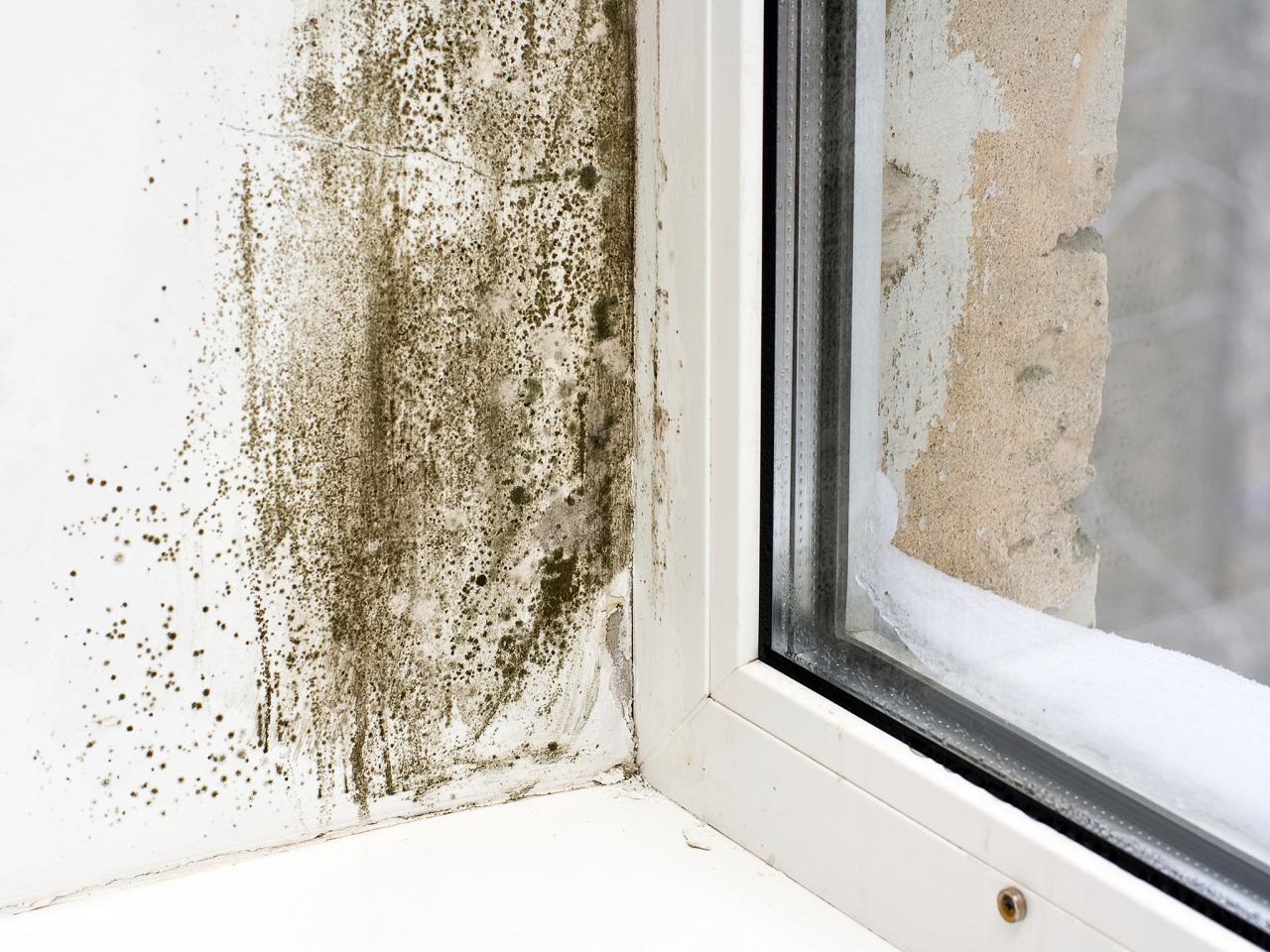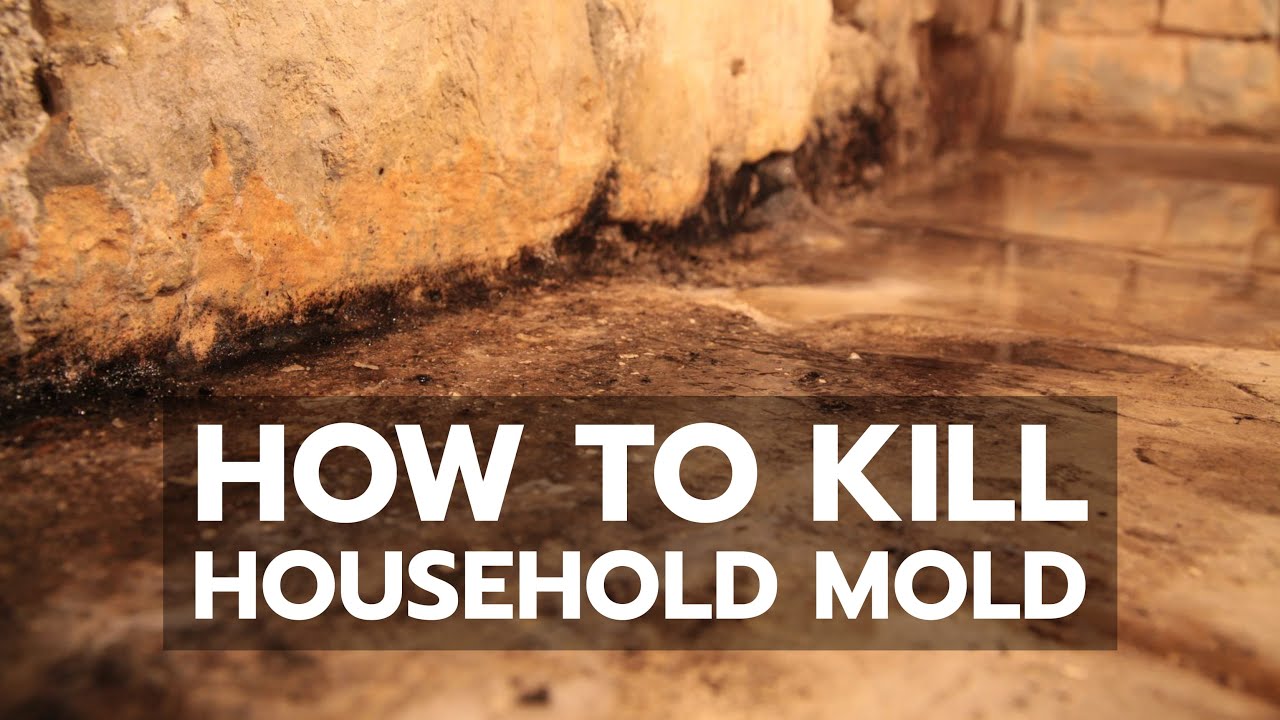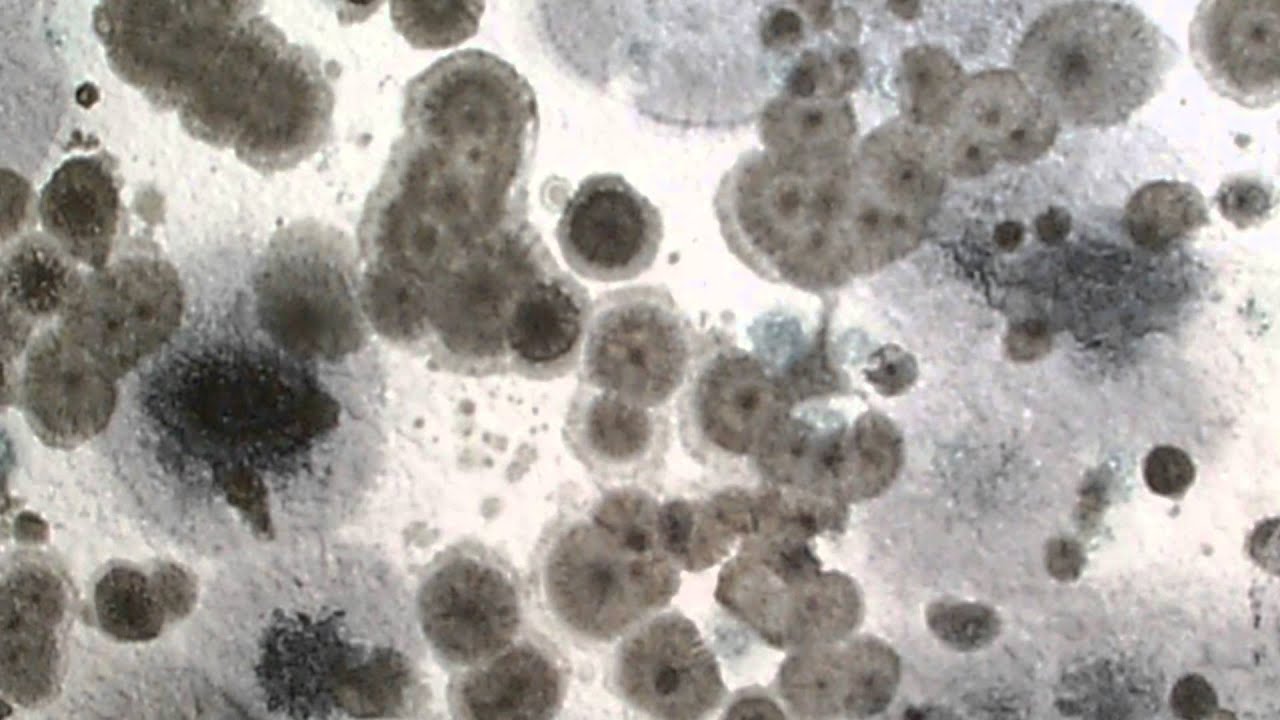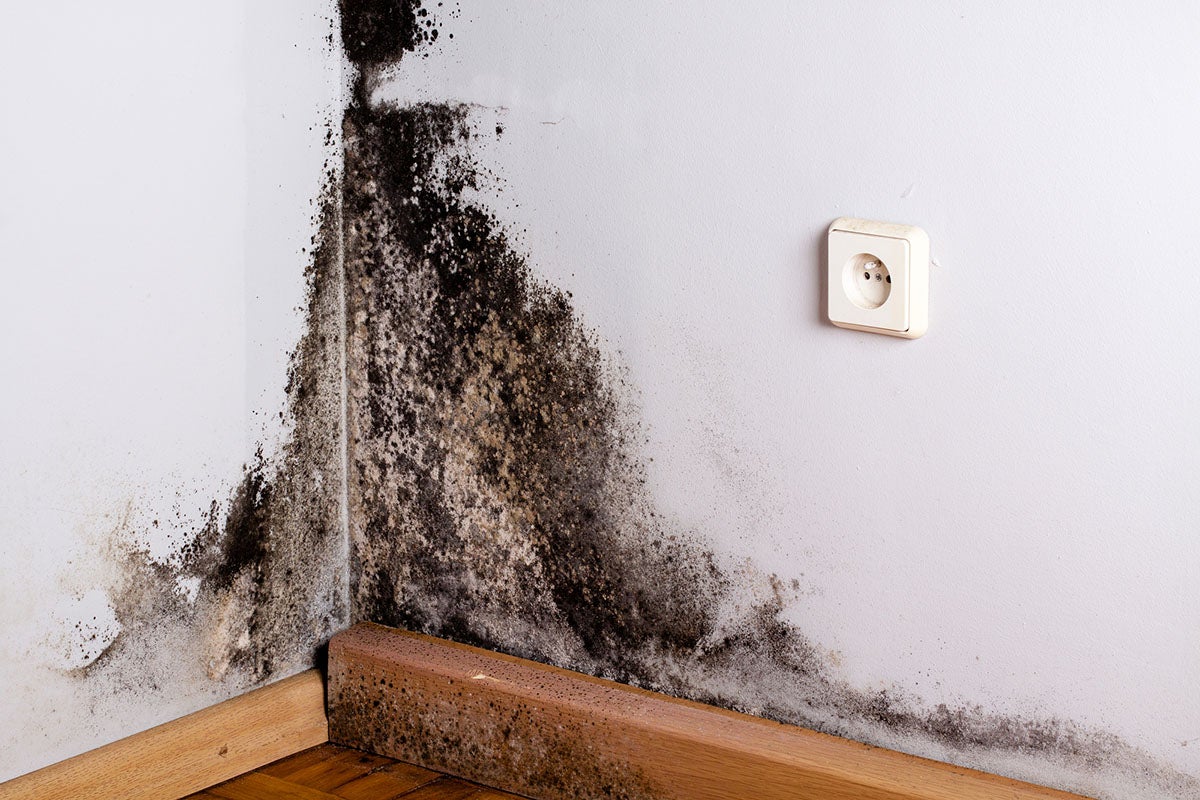Black Mold - How Does It Affect Your Health?
Mold is a kind of fungus that grows on dead plants and animals. This can include things like wood and gypsum plasterboard for building, as well as carpets, curtains, books, and boxes. Mold grows best in places that are damp and don't get enough air flow. It spreads by making spores. Mold spores can be found in the air both inside and outside.
Author:Suleman ShahReviewer:Han JuJul 27, 202311.9K Shares181K Views

Black moldis a kind of fungus that grows on dead plants and animals. This can include things like wood and gypsum plasterboard for building, as well as carpets, curtains, books, and boxes.
Mold grows best in places that are damp and don't get enough air flow. It spreads by making spores. Mold spores can be found in the air both inside and outside.
If they land in damp places inside, they might start to grow and spread. There is no practical way to get rid of all mold indoors. To stop mold from growing indoors, you need to control where the moisture is coming from.
It is important that your home has good ventilation to keep mold from growing and to reduce the amount of moisture inside.
Mold is not just one kind of fungus. There are many different kinds of mold. Even if mold doesn't cause serious healthproblems, some people are more sensitive to its spores and can get breathing problems if they come in contact with them.
Mold can make almost anyone sick if there is a lot of it. So, if you find mold spores in your home, it's important to get rid of them and take steps to keep them from coming back.
What Are The Types Of Mold?
Mold is a type of fungus that can develop either indoors or outdoors. In the wild, this organism is an important component of the ecosystem since it is responsible for the breakdown of animal and plant debris. The inside can be hard to deal with because it can cause infections and allergies.
It's possible for several varieties of mold to coexist in the same home. It's possible that you won't be able to differentiate between the various types if you don't have enough background information on the topic. The good newsis that professionals who remove mold can examine the fungus and determine the most effective method for removing it.
The following are the most prevalent forms of mold found indoors:
Aspergillus has a powdery appearance and can create spots that are gray, white, or green. It typically does not require a great deal of ventilation and can be seen growing in places like basements, attics, walls, and fabrics.
Penicillium can be yellow, green, or blue in color, and it typically grows in areas where there has been water damage, such as in insulation, beneath carpets, in basements, and in any other area. If your home was damaged in a fire and you later discovered mold growth as a result of the water that was used to put out the fire, you should get in touch with a company such as watermoldfire.net that has experience treating mold that has developed as a result of water damage.
Cladosporium can appear black, green, or brown, and it thrives in settings that are either warm or cool. In most cases, it will grow on textiles, carpets, wood, and in ventilation ducts for cooling and heating systems.
Alternaria, Trichoderma, aureobasidium, and Stachybotrys chartarum are some examples of other forms of mold that are capable of growing inside.

How to Kill Household Mold
What Causes Mold To Grow Indoors?
Mold can only flourish when there is a sufficient amount of moisture present, either on the surface it is growing on or in the surrounding air. Common causes include:
- Roofing and walls that are leaking, in addition to clogged gutters and downpipes
- Leaky plumbing
Condensation that forms in locations with poor air circulation, such as cupboards and corners, as well as on furniture that is pressed up against uninsulated outside walls. This condensation can be caused by activities such as cooking, showering, and drying clothing.
By using heat, insulation, and ventilation, you can eliminate conditions that encourage the growth of mold. Ventilating a space, whether by opening a door or window, is the quickest, most cost-effective, and easiest way to lower the levels of moisture and humidity in a room. When possible, exhaust fans should be used.
What Are The Symptoms Of Mold Exposure?
The outdoor air is the first thing that comes to mind when you think of pollution in the air. However, according to experts, the quality of the air inside your home is lower, and it can include anywhere from two to five times as many air pollutants (including mold) as the air outside. It would appear that the quality of the air within homes and other buildings is a factor in more than half of health problems.
Symptoms of mold allergies, such as coughing, watery eyes, rash, and runny nose, are typically what people think of when they hear the term "mold symptoms." On occasion, however, mold can cause more severe reactions. Mold can also have an effect on your nervous system and immune system, and it is possible for you to develop physical, mental, and emotional problems as a result.
The following is a list of symptoms that are commonly associated with mold exposure:
- Congestions
- Runny nose
- Sneezing
- Eye irritation
- Skin rash
- Coughing
- Lung irritation
- Sore throat
- Wheezing
- Headache
- Vertigo
- Metallic taste
- Changes in word-finding, concentration, memory
- Sensitivity to light
- Increased urination and thirst
- Sudden weight gain
- Appetite swings
- Depression, anxiety, or rage
- Numbness or tingling in feet and hands
- Muscle cramps
- Joint pains
- Changes in adrenal hormones and thyroid

Mold: What it Needs to Grow Indoors
What Are The Health And Safety Risks Of Mold?
The idea that mold, especially black mold, is dangerous to one's health because it might induce mycotoxins to become more active is one that is widely believed. Mycotoxins have been shown to be the cause of major health problems in people living in homes that have been polluted by mold.
If a person has been poisoned by mold that contains mycotoxins, they may show the following signs:
- Nosebleeds
- Memory loss
- Headaches
- Changes in mood
- Pains and aches
On the other hand, there is no evidence that breathing in mold spores causes the symptoms listed above.
Mold causes allergic reactions in the majority of people only after they have been exposed to it for an extended period of time. Extremely rarely, the fungus causes serious health problems in people who are already at risk because of other things.
The vast majority of people who breathe in mold spores do not become ill. On the other hand, they run the danger of developing lung infections if they have specific health concerns.
Valley fever, also known as coccidioidomycosis, sporotrichosis, histoplasmosis, and aspergillosis, are the four mold-related illnesses that are diagnosed most frequently.
If a person already has a respiratory disease like tuberculosis, cystic fibrosis, sarcoidosis, asthma, or chronic obstructive pulmonary disease (COPD), they are more likely to get an infection from breathing in mold spores.
Asthma. People who have asthma are more likely to experience an asthma attack if they are exposed to mold, and they may require inhalers to relieve the symptoms of their condition.
Pneumonitis has been linked to long-term exposure to mold, and hypersensitivity to mold is usually caused by exposure to mold at work or by occupational risks.
How Can You Regain Your Health?
Test Your House
It is not commonly thought to be required to test a residence for mold if the mold in question can be seen by the naked eye. However, not all mold is obvious to the naked eye because the contamination could be in the ceiling or cavities. In most cases, if you can see or smell mold, you should immediately begin cleaning up the area and removing the mold, as mold can cause damage to the surfaces it develops on.
If you suspect mold contamination but are unable to identify the cause of the issue, or if you have already taken steps to prevent mold from growing but are still experiencing issues, you might want to consult with a professional who specializes in occupational hygiene or environmental health and safety. Mold testing and consulting are specialized services that these professionals can provide for a fee.
Leave Your Home Until Fungus Is Treated
If a fire occurs in your home, there is a good likelihood that mold will begin to form as a result of the damage caused by the water. Contamination is easy to spread on porous materials such as wood surfaces, textiles, and other porous things. If you are able to determine which surfaces have been infected, remove them from the home. However, if you are unable to locate the source of the mold, it is best for you to remain with your loved ones until the mold removal firm has cleaned the area.
Seek Health Assistance
The process of recovering from a health problem that is related to mold exposure can be very taxing. To recover your health and restore your wellness, having access to both medical and social care would be beneficial. Consult a healthcare practitioner and be sure to take their advice into account. They might recommend that you go to an ozone sauna in order to fortify your immune system and speed up your recovery from mold infection. In the event that your mental healthtakes a turn for the worse, you may try to relieve the negative feelings by participating in activities such as yoga, Pilates, meditation, or even just moderate stretching.
People Also Ask
How Do You Know If Mold Is Making You Sick?
When you breathe in mold spores and have a mold allergy, your immune system reacts in an exaggerated way to the mold. Having an allergy to mold can make you unhappy by causing symptoms such as coughing and eye itching, among other things. Some people with mold allergies also have asthma, and being around mold can make it hard to breathe and cause other problems with the airways.
How Does Mold Affect Your Health Long Term?
People who have been exposed to mold for an extended period of time may begin to develop symptoms such as recurrent headaches and migraines, higher levels of tiredness, and random muscle cramping as the toxicity of the mold rises. When the exposure is more severe, the person may also become sensitive to light, gain weight without trying, and lose their hair.
How Long Does It Take Mold To Make You Sick?
These symptoms will often begin to manifest anywhere from two to nine hours after exposure and can continue for anywhere from one to three days. Other people who are afflicted with this condition experience a growing shortness of breath, cough, and weight loss. It's possible that job-relatedness won't become obvious until after a lengthy break from work, if symptoms improve and then return after the break.
How Can I Test Myself For Mold Exposure?
Utilizing our urine mycotoxin test and our EMMA home environment test are the two testing procedures that provide the most accurate results. Mold testing will provide you with an in-depth look at the levels of mold and mycotoxins present in both your body and your property. For more information on these tests, I suggest reading up on how to spot mold growth in your home and how to find mold in your home.
Conclusion
Black mold takes a very variable amount of time to start causing symptoms, depending on the type of mold. The adverse effects may be experienced right away, not until later, or not at all. It depends on the conditions in your environment and how sensitive you are to mold.
In addition to that, you should think about how long you were exposed to the mold and how much of it there was. More severe symptoms might also be brought on by coming into direct contact with mold.
Reducing your exposure to mold is the most effective strategy to lessen the effects of mold on your body. Visit a medical professional if your symptoms do not improve.

Suleman Shah
Author
Suleman Shah is a researcher and freelance writer. As a researcher, he has worked with MNS University of Agriculture, Multan (Pakistan) and Texas A & M University (USA). He regularly writes science articles and blogs for science news website immersse.com and open access publishers OA Publishing London and Scientific Times. He loves to keep himself updated on scientific developments and convert these developments into everyday language to update the readers about the developments in the scientific era. His primary research focus is Plant sciences, and he contributed to this field by publishing his research in scientific journals and presenting his work at many Conferences.
Shah graduated from the University of Agriculture Faisalabad (Pakistan) and started his professional carrier with Jaffer Agro Services and later with the Agriculture Department of the Government of Pakistan. His research interest compelled and attracted him to proceed with his carrier in Plant sciences research. So, he started his Ph.D. in Soil Science at MNS University of Agriculture Multan (Pakistan). Later, he started working as a visiting scholar with Texas A&M University (USA).
Shah’s experience with big Open Excess publishers like Springers, Frontiers, MDPI, etc., testified to his belief in Open Access as a barrier-removing mechanism between researchers and the readers of their research. Shah believes that Open Access is revolutionizing the publication process and benefitting research in all fields.

Han Ju
Reviewer
Hello! I'm Han Ju, the heart behind World Wide Journals. My life is a unique tapestry woven from the threads of news, spirituality, and science, enriched by melodies from my guitar. Raised amidst tales of the ancient and the arcane, I developed a keen eye for the stories that truly matter. Through my work, I seek to bridge the seen with the unseen, marrying the rigor of science with the depth of spirituality.
Each article at World Wide Journals is a piece of this ongoing quest, blending analysis with personal reflection. Whether exploring quantum frontiers or strumming chords under the stars, my aim is to inspire and provoke thought, inviting you into a world where every discovery is a note in the grand symphony of existence.
Welcome aboard this journey of insight and exploration, where curiosity leads and music guides.
Latest Articles
Popular Articles
